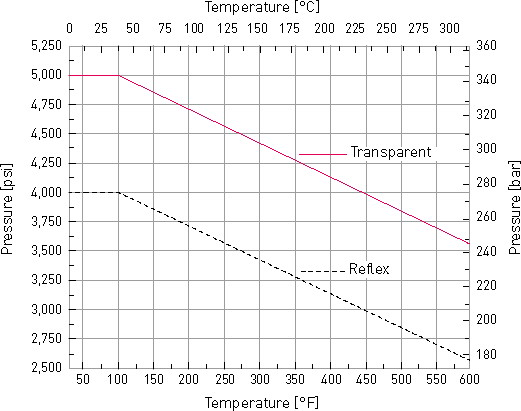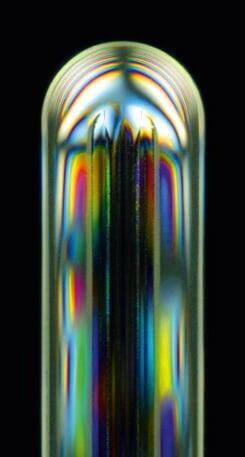Long form reflex and transparent level gauge glasses
Bending strength is determined by the surface compressive stress and the inherent resistance of the glass. The inherent resistance is heavily dependent upon the surface quality.
For safety reasons, the stress to the glasses caused by internal forces, thermal stress and vessel pressure have to be totally absorbed by the surface compressive stress so that a tensile stress of the glass surface is prevented.
Technical Data
| Application conditions | Maximum permissible pressure (bar) | Maximum permissible pressure (psi) | Maximum permissible temperature (°C) | Maximum permissible temperature (°F) |
|---|---|---|---|---|
Saturated steam or hot water in direct contact with reflex or transparent sight glasses | 35 | 500 | 243 | 470 |
| Saturated steam or hot water in contact with transparent sight glasses protected with mica | 103 | 1,500 | 320 | 608 |
| Non-corrosive, non-steam service and no technically significant glass attack, with reflex or transparent glasses | 280 | 4,000 | 38 | 100 |
| Transparent sight glasses in contact with medias with no technically significant glass attack | 345 | 5,000 | 38 | 100 |
| High pressure transparent sight glasses in special gauges | 414 | 6,000 | 38 | 100 |

Temperature
| Thermal shock resistance | ΔT 230°C |
| Max. permissible temperature | 300°C (572°F) |
| When protected with mica | 320°C (608°F) |

